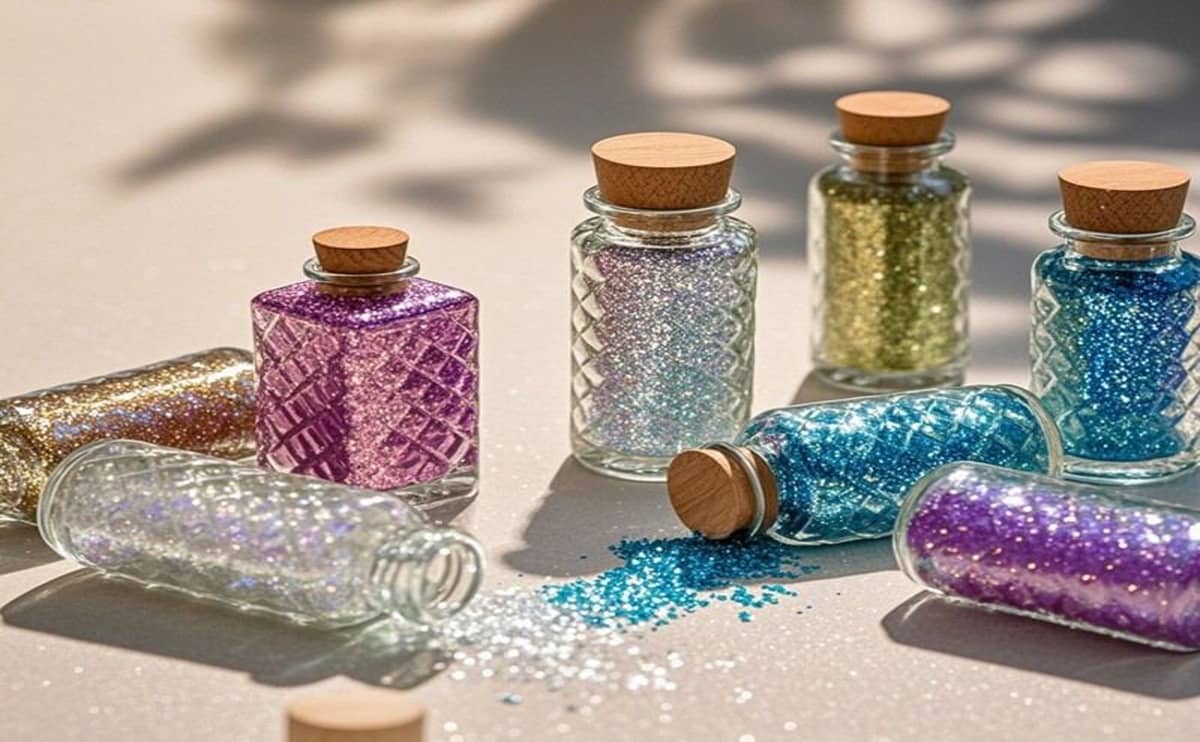Is Biodegradable Glitter the Best Choice for Eco-Friendly Crafts?

For decades, glitter has brought joy to arts and crafts lovers—adding shimmer to cards, ornaments, makeup, and school projects. But as awareness about microplastic pollution grows, traditional glitter has come under scrutiny. Made from plastic and aluminum, conventional glitter particles often end up in oceans, soils, and wildlife systems. So, as eco-consciousness rises, many crafters and brands are asking the same question: Is biodegradable glitter truly the best choice for sustainable, eco-friendly crafts? 🤔
Let’s explore what sets biodegradable glitter apart, how it performs in crafting applications, and whether it’s the future of sparkling responsibly.
What Is Biodegradable Glitter? 🌍
Biodegradable glitter for crafts is made from plant-based materials—most commonly regenerated cellulose film derived from eucalyptus or other sustainably harvested trees. Unlike conventional plastic glitter, this type of eco-friendly glitter breaks down naturally in composting or water-rich environments, often within weeks or months, depending on conditions.
While it may look just as vibrant and shiny as regular glitter, biodegradable craft glitter offers the added benefit of guilt-free sparkle. Many manufacturers also dye their glitter with non-toxic pigments and coat it with cosmetic-safe, food-grade ingredients.
✅ Eco-Friendly
✅ Non-Toxic
✅ Microplastic-Free
✅ Safe for Skin and Nature
Why Crafters Are Making the Switch ✂️🌿
The craft community—from individual artists to bulk buyers and educators—is increasingly shifting toward sustainable glitter options. Here’s why biodegradable glitter is becoming the preferred alternative:
-
🌊 Reduces Environmental Impact
Traditional glitter never fully degrades. As a form of microplastic, it enters waterways and soil systems, contributing to pollution and harming marine life. By contrast, plant-based glitter decomposes naturally without leaving harmful residues. -
🧒 Safer for Kids’ Crafts and Schools
Because biodegradable craft glitter contains no harsh chemicals or sharp edges, it’s safer for children and widely accepted in school settings. Teachers and parents can feel confident using it for group projects and holiday art sessions. -
🪴 Appeals to Eco-Conscious Consumers
If you’re a business producing craft kits, greeting cards, or eco-stationery, using biodegradable glitter can strengthen your brand’s sustainability image. Consumers increasingly look for environmentally responsible products, and “plastic-free glitter” is a key selling point. -
♻️ Aligns With Global Regulations
Several countries, especially in Europe, are banning or restricting microplastic-based glitter. By adopting biodegradable options early, brands and distributors can future-proof their product lines and stay ahead of legal shifts.
How Does It Compare to Traditional Glitter? ✨
One common concern is whether biodegradable glitter offers the same aesthetic performance as conventional glitter. The answer is: for most uses—yes!
-
💎 Shine: High-quality eco-friendly glitter reflects light just as well, although some ultra-fine particles may appear slightly less metallic due to the absence of aluminum.
-
🧵 Versatility: Biodegradable glitter works for glue-based applications, resin art, nail polish, bath bombs, and more.
-
🎨 Color Range: Available in a wide spectrum—from holographic silvers and golds to vivid pinks and greens.
-
💧 Water Resistance: Some biodegradable options are water-resistant but still break down over time in compost or wet soil. This makes them suitable for both dry and short-term wet applications.
However, for heavy-duty industrial coatings or long-exposure outdoor use, you may still need specialized blends or sealed applications.
Is It Suitable for Large-Scale Production? 🏭
Yes. Many wholesale glitter suppliers now offer biodegradable glitter in bulk for B2B clients. Whether you’re a craft brand, educational distributor, or party goods manufacturer, you can now source:
-
Biodegradable glitter in multiple sizes (from ultra-fine to chunky)
-
Private-label or OEM glitter solutions
-
Custom glitter blends with natural mica or sustainable binders
-
Certified compostable packaging to align with green branding
When sourcing, ensure your glitter supplier provides test data on compostability and safety. Reputable manufacturers label their glitter as “biodegradable in natural environments” rather than “biodegradable in industrial compost only.”
Things to Consider Before Switching 💡
Before fully switching to biodegradable glitter for crafts, consider these practical points:
-
📦 Shelf Life: Store in cool, dry places. While stable, plant-based glitters may degrade faster in humid conditions over long periods.
-
🔬 Certification: Look for certified compostability (e.g., EN13432) or FDA-approved cosmetic-grade labeling.
-
💰 Price: Biodegradable glitter is slightly more expensive than conventional glitter, but the eco-value it adds often justifies the investment—especially in branded products.
Final Thoughts: Sparkle Responsibly ✨🌎
So, is biodegradable glitter the best choice for eco-friendly crafts? Absolutely. It offers the beauty of traditional sparkle with none of the environmental guilt. For schools, artists, and sustainable product developers, it’s the logical next step toward greener, more responsible creation. As more glitter powder manufacturers innovate in sustainable materials, costs are decreasing and quality is improving. Whether you’re decorating handmade cards, launching an eco-craft line, or just adding shimmer to a holiday project—choosing biodegradable glitter for crafts is a simple yet powerful step toward a cleaner planet. 🌈💚
